Plaster Casters
Plaster reproductions of classical sculpture were once an integral educational tool in teaching people classical history in the United States. Casts were widely used in museums, public buildings, and schools.
Casters, through the ages, have played an important role in the creation and reproductions of sculptures. Aside from studios that made copies of classical or Renaissance works, the accomplished caster worked side by side with the great sculptors of originals. He could make a masterpiece remain a masterpiece or in a short time he could potentially ruin many months of sculpting.
The casters’ challenge would be to pour a faithful and strong plaster copy without damaging the mold.
This oftentimes took great physical strength and the casters were a robust bunch of guys as you can see here.
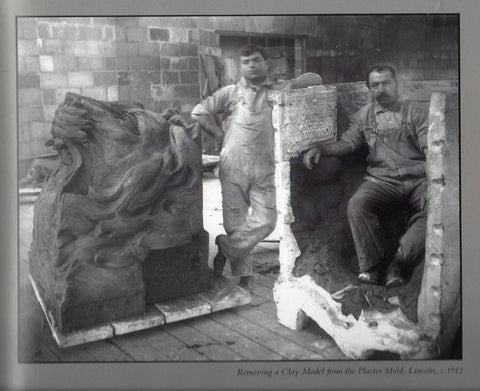
Photo from: Kurutz, Gary F. (1989). Architectural Terra Cotta of Gladding, McBean. Sausalito, CA: Windgate Press. Pg. 43
The Start of P.P. Caproni and Brother
Between 1892 and 1952, the leading supplier for high-quality plaster casts was P.P. Caproni and Brother in Boston, MA. The Giust Gallery (now the Caproni Collection) traces its lineage back to the Caproni brothers, Pietro and Emilio. They identified all their casts with a hallmark that was embedded into the bottom surface, the impression of which you can see in many of our casts today.
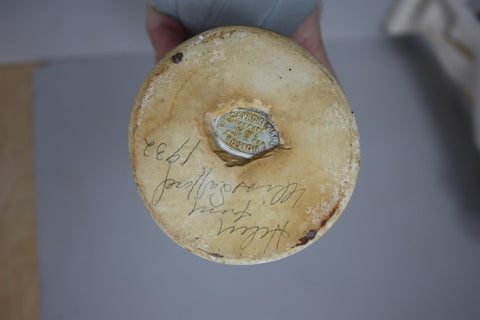
Pietro Caproni, the founder of the company, was born in Barga, Italy in 1862.
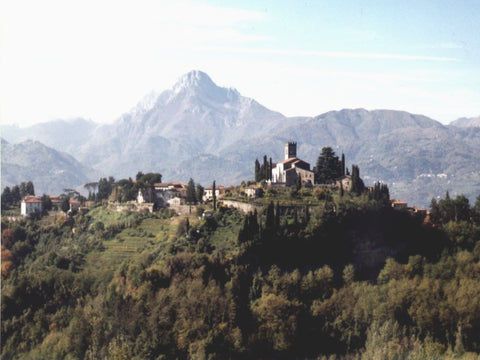
Photo from: https://commons.wikimedia.org/wiki/File:Barga_Alps.jpg
He left Italy and came to Boston in 1876 and shortly after was listed in the Boston City Directory as an “image maker” working as an apprentice at the Paul Garey plaster cast studio.
The First Catalog and the Culture of Casts
After Caproni’s apprenticeship of seven years, he perfected his craft and became aware of the nature of the cultural community for whom he was creating the casts. As Paul Garey retired in 1894, Caproni and his brother bought out the studio and published their first catalog: Catalog of Plaster Cast Reproductions from Antique, Medieval, and Modern Sculpture.
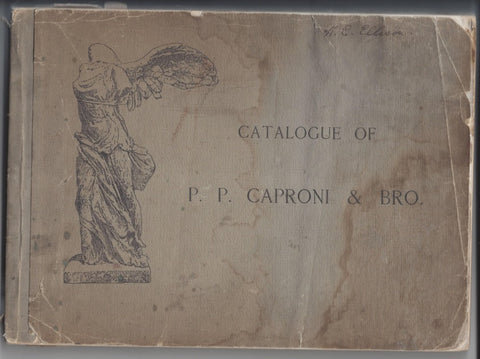
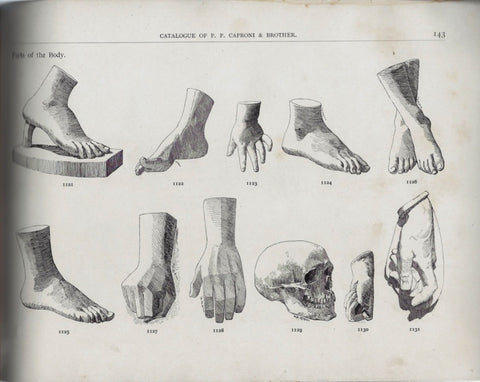
His client list included prominent collectors such as Tiffany, Stanford White, Saint-Gaudens, Isabella Stewart Gardner, and countless schools, museums, and libraries.
The Growth of P.P. Caproni and Brother
They expanded their work force with craftsmen from Italy and quickly became one of the premier casts makers in the world. In 1895, Caproni purchased 2 adjoining lots on Washington Street in Boston and built the new Caproni studios. Copies of gargoyles from the Notre Dame Cathedral were placed at the corners of the studio roof.
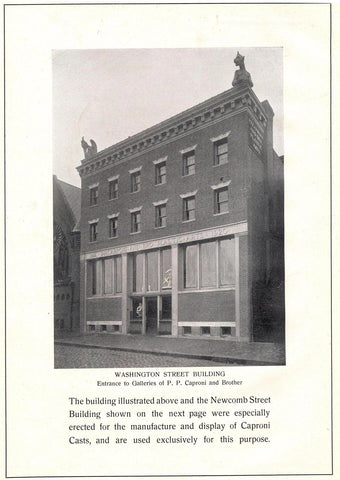
As people passed on the street they could see through the huge glass windows great pieces of antiquity such as the full-sized Victory of Samothrace and the Laocoon Group. The building totaled about 27,000 square feet and the entire first floor was devoted to the storage of molds and the casting room.
Work for some of Boston’s most Renowned Institutions
By 1901, Caproni published his first hard bound catalog. In addition to the Greek, Roman, and Renaissance statues and reliefs, he added the work of some modern European sculptors.
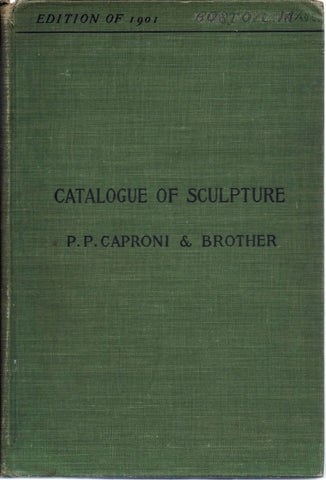
The studio’s commissions and sales continued to increase and in 1902 Caproni cast the 14 classical sculptures in the niches above the audience at Symphony Hall in Boston.
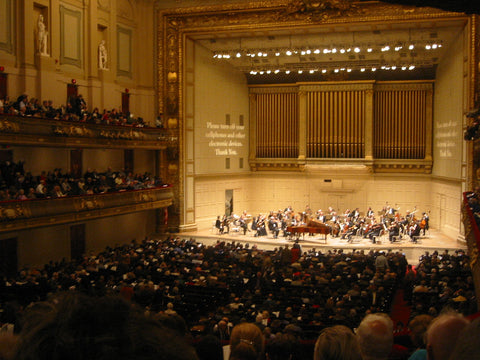
Photo from: https://commons.wikimedia.org/wiki/File:Symphony_hall_boston.jpg
Casting some of Europe’s Most Famous Statues
During these early years, Caproni with his mold makers made countless trips back to European museums to make piece molds of many of the world’s greatest masterpieces.
At that time, the museums and institutions had confidence in the skills of the master mold makers and would authorize permission to make the molds. Imagine going to the Vatican Museum today with a bucket of plaster and trying to make a mold of Michelangelo’s Pieta. By 1911, Caproni’s collection of molds grew to over 4,000 pieces and he printed his next and biggest catalog. This hard bound version was the largest Caproni catalog ever issued.
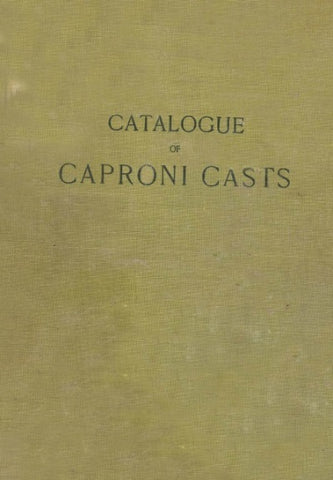
As you can see, you could purchase the full-size Laocoon Group for $200:
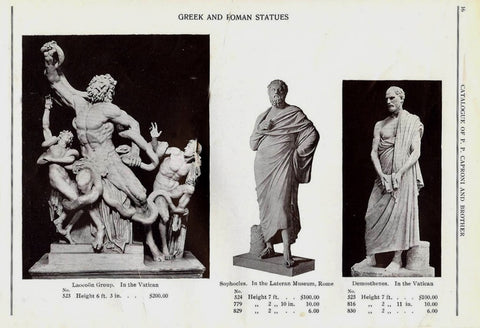
A full-size St. George or Michelangelo’s Slave was $75. Greek and Roman busts averaged $10 to $12 each:
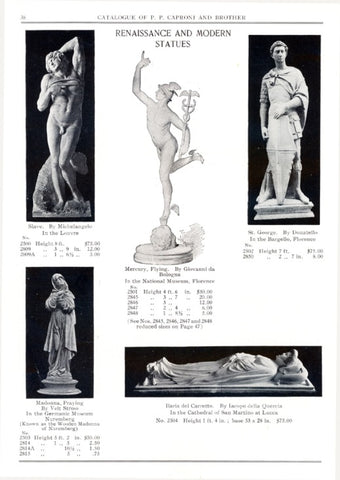
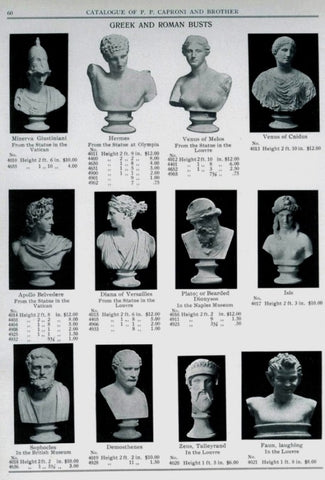
The catalog also included hundreds of anatomical studies, ornaments, and animals.
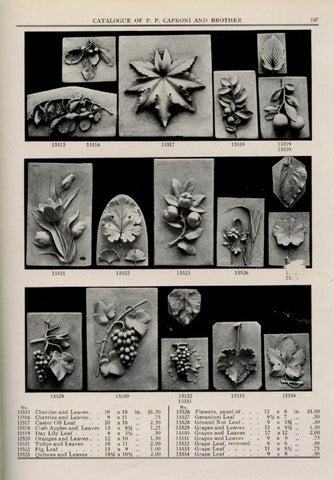
The Caproni Gallery
At that time, the Caproni Gallery was divided into 5 separate areas with casts from the history of sculpture including Classical, Renaissance, Gothic, and Modern.
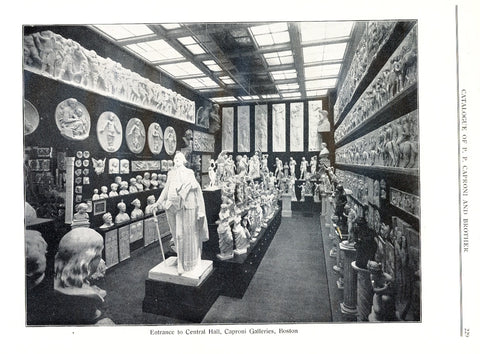
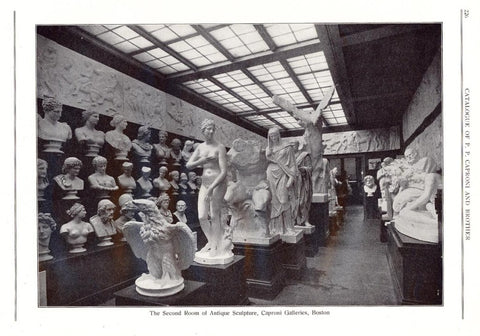
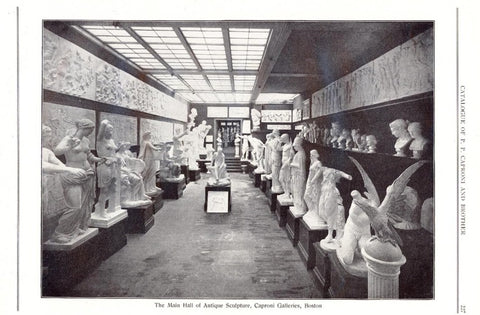
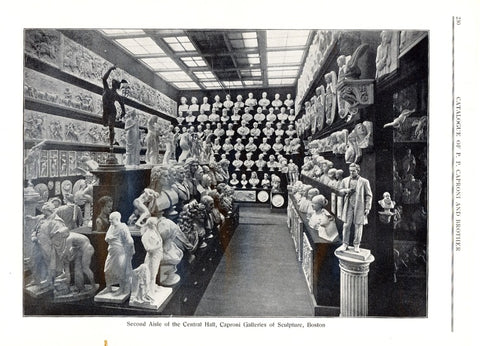

A Team of Master Casters
The following years were prosperous for the Caproni studios and its continued inventory of high-quality plaster casts. The Caproni team of mold makers and casters included prominent craftsmen of that era including Leo Toschi and Ceasar Luchini and later Nedo Cassetari and Emilius Ciampa.
This picture shows some of the Caproni casters enjoying lunch in a reproduction of the big Rhino, by Katharine Lane Weems.
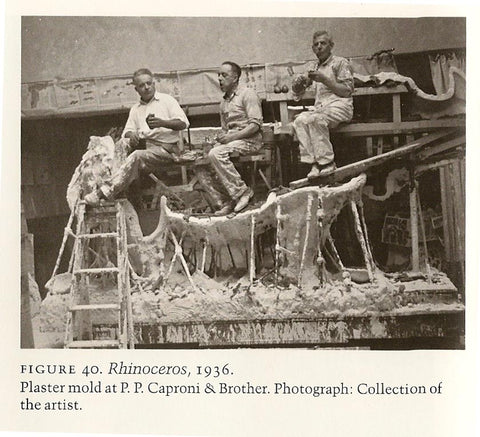
Photo From: Ambler, Louise Todd (1987). Katharine Lane Weems: Sculpture and Drawings. Boston, MA: The Boston Athenaeum. Pg. 48
And here are 3 casters (Pictured, left to right, Adelino Vanni, Ceasar Luchini, and Leo Toschi) with a plaster copy of Houdon’s Anatomy of Man.
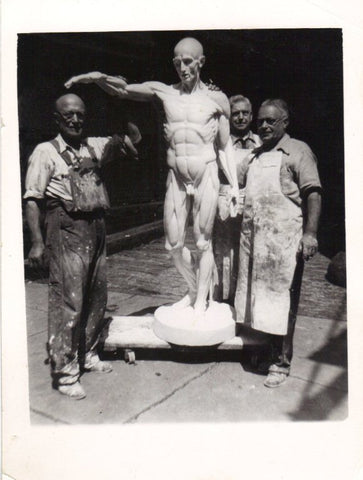
Photo Courtesy of Margaret Toschi-Luppino
And another photo of Caproni Casters. Leo Toschi is in the front/middle:
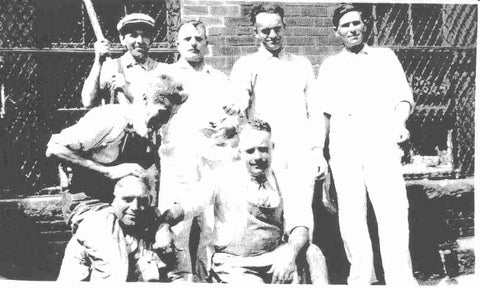
Photo Courtesy of Margaret Toschi-Luppino
The End of an Era
Caproni died in 1928 and his death coincided with a decreasing interest in the Classics and plaster casts. Cast museums were being dismantled and with the emergence of impressionism and later abstract sculpture, the museums focused more on the exhibition of contemporary work.
The World Wars and Depression also contributed to the decline of the Caproni studios. As it declined, it changed owners about 5 times. I will write more in upcoming posts about what came of the Caproni collection, and what survives today.
-Robert Shure
The Giust Gallery (now the Caproni Collection)
Want content like this delivered to your inbox? Sign up for our newsletter!
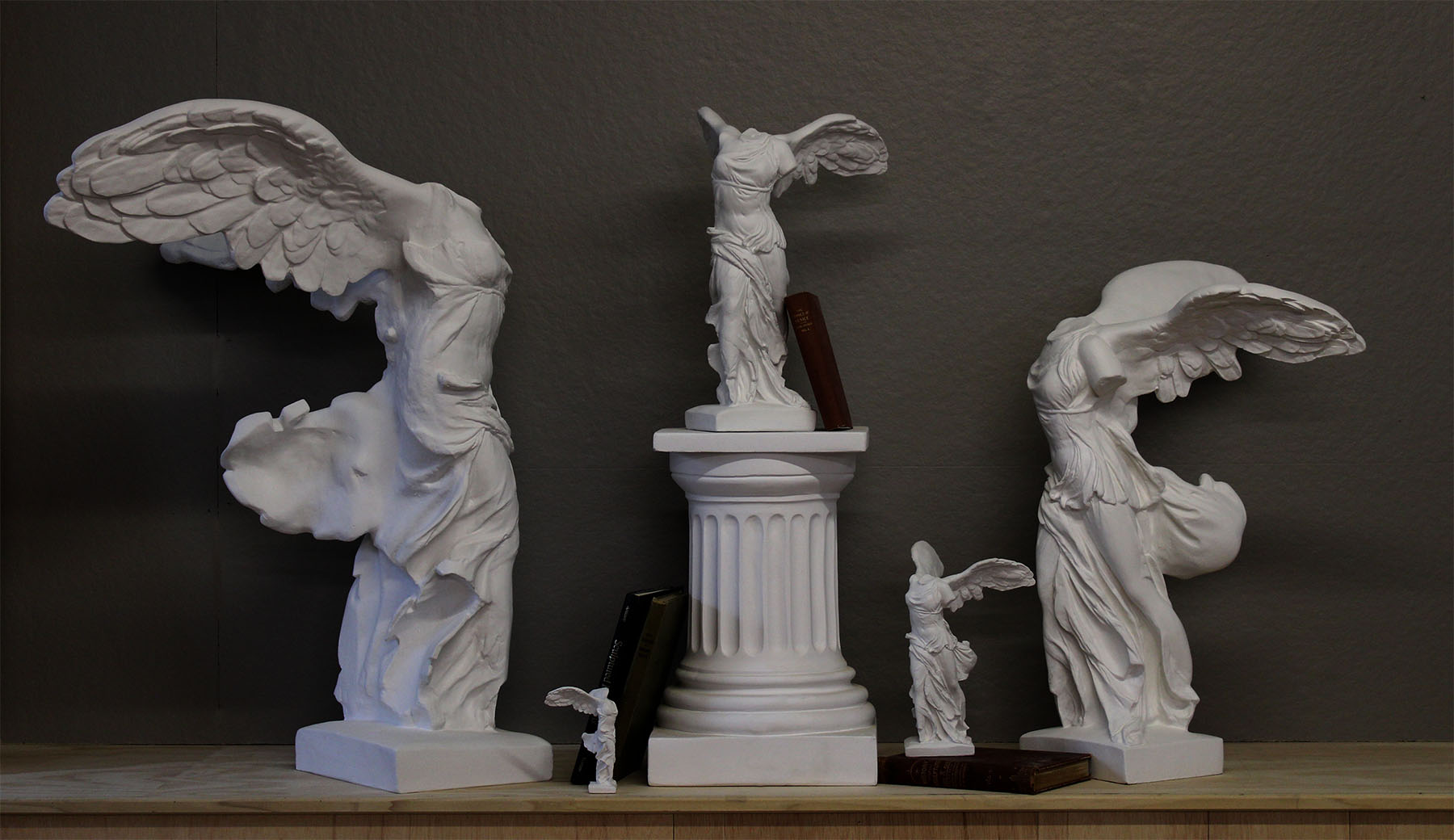
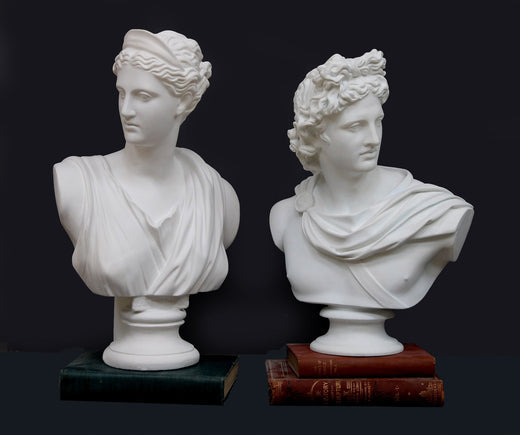
Comments
Dear Mr Shure, I am so pleased to find your blog. I am trying to find casts of the Parthenon west frieze to display for a few years in a special exhibit in a museum in Indiana. Ideally we would like to buy casts, but if none were for sale, perhaps we might borrow some. Are you able to tell me where Caproni’s original casts were sold? Might you know if any of those organizations would consider loaning any casts? Thank you so much,
E. King, archaeologist , Athens, GR
I have a lincoln life mask that I have been told is a Caproni however there is no tag attached to be certain. I am looking to verify its maker.
I have a caproni bros. life mask of abraham lincoln and it has an imbedded tag inside. I ’m curious as to when it was made and if it has any value,monetarily or historically. Unfortunately, some has painted it-(w/acrylic?). Any info would be most appreciated.
hello ,
any information on this is so much appreciate. I have acquired a Caproni Brothers its 59×85 piece of looks like 3
Renaissance women. I have no idea the value or time frame on this.
Thank You for your time
Linda
Hello,
I am in possession of an original (I believe it is an original) 1905 Caproni frieze item #177. It is in average condition with some cracks, chips, and sadly an arm missing. Could you tell me something about it? I’m wondering if it has any value? Any information would be greatly appreciated.
Thank you in advance,
Katie
Hello Savannah and C.H. Yoe High School,
Thank you for your comment. We would be happy to give you an idea of when the cast was made and how much it might be worth. Could you send photos of the cast and of the Caproni tag (if there is one embedded in it)? Please send them to our email- orders@giustgallery.com.
Sincerely,
Kayla
We found a cast of Whittier by Wm O. Partridge ‘95 #6017 in our old high school facility and our Assistant Principle was wondering what year it is from and how much a cast as this might be valued at. The sculpture itself is in good condition with a few marks from wear and age. We’d really appreciate assistance in solving this mystery!
Thank you, C.H. Yoe High School, Cameron, Texas
Hello Carol,
It would be best if you could send us some pictures of the casts so we can identify them and assess their condition. If so, email them to us at orders@giustgallery.com. Feel free to call us as well at 781-933-2455.
Thanks,
Robert
Hello,I found a pair of lions today at a garage sale,they have some damage,but are still beautiful to me. The female is unmarked,the male has a brass plate under the platform he is standing on,it reads "PP Caproni & BRO. ,Plastic Arts,Boston,U.S.A. On the front of the platform is the number "1281"and on the top of the platform the letters “BAR”,there is another mark on top but I,m not sure what it is. The male has a broken platform and cracked front paw and some minor chips. The female has a front leg and a back leg that have been cracked and some minor chips. They are a matching pair. Can they be restored,do they have any value? Thanks for any information you can give me. Carol Oliver
Dear Kathleen and Robert,
Almost a year on and I treasure my Augustus bust you guys made me. It stands as a reminder of the splendor once past, and of which you guys are keeping the art form alive through your magnificent workmanship….well done indeed.
Regards…Phil